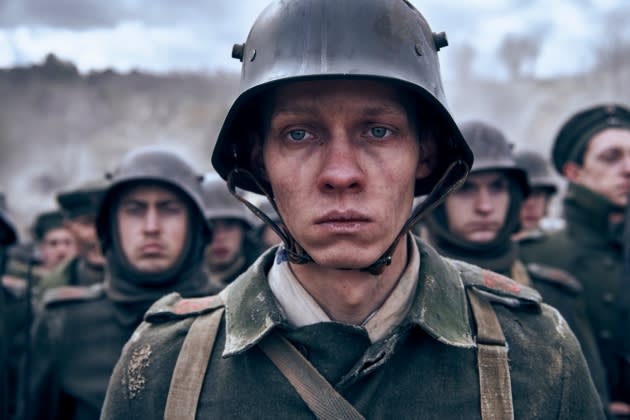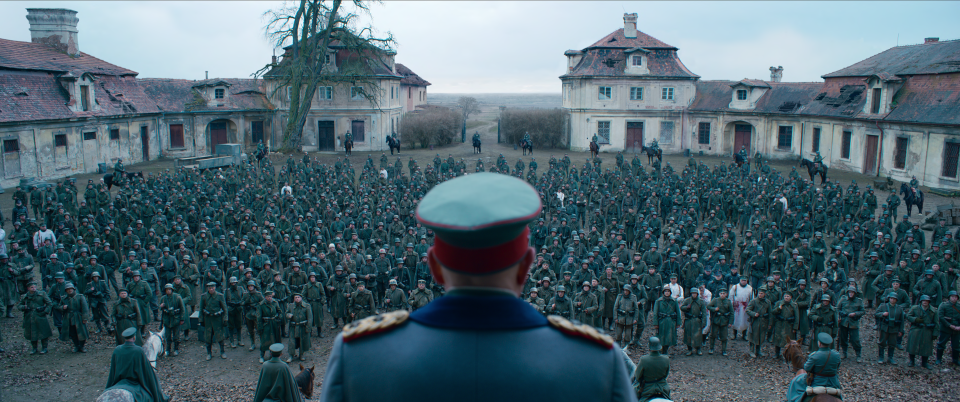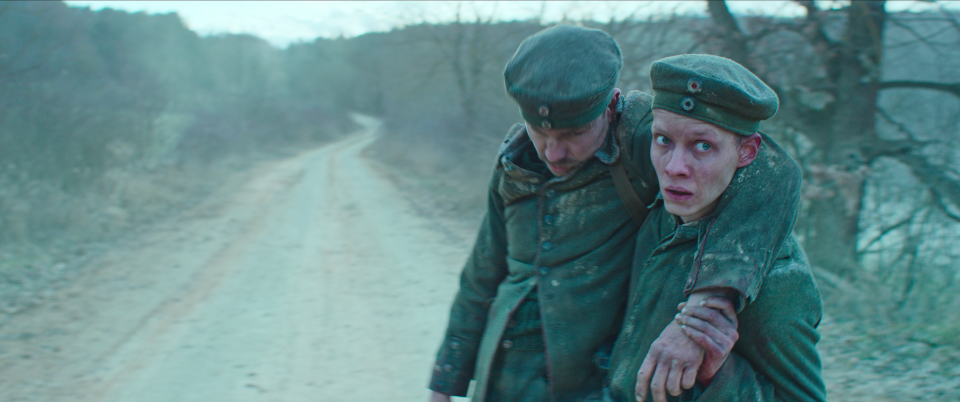How ‘All Quiet on the Western Front’ Reimagines the Classic Anti-War Epic
- Oops!Something went wrong.Please try again later.
- Oops!Something went wrong.Please try again later.
- Oops!Something went wrong.Please try again later.

Erich Maria Remarque’s 1929 novel “All Quiet on the Western Front” already boasts an immortal and definitive cinematic legacy in the form of Lewis Milestone’s 92-year-old Hollywood adaptation, but the World War I epic had never been told on the screen in its native language until now. Director Edward Berger’s bold vision of the tale comes at a time when Remarque’s anti-war treatise rings truer than ever.
“We obviously didn’t know that there would be a war now in Europe [Ukraine], and it’s not supposed to be a comment,” Berger says. “But when we started it, we did feel there was a certain government [in the U.S.]. There was Brexit in Europe. In Hungary, in Poland, in Germany, in France — the populists in those countries started questioning institutions that had brought us peace for 70 years, in a continent that is usually torn by war. It just reminded us of the stuff we learned in history lessons when we were kids.”
In 2015, German actor Daniel Brühl joined producer Malte Grunert’s Amusement Park Film with a clear focus in mind: seeking out material that was inherently German, but had international appeal as well. “All Quiet on the Western Front” ticked every box. In the film, which was released on Netflix on Oct. 28, Brühl portrays German writer and politician Matthias Erzberger, who would eventually sign the armistice ending the war as a representative of the defeated Reich government, making him a traitor in the eyes of those on Germany’s political right of the era.
“I find it interesting if you touch a holy material, such as this book, and do something new with it. We add some very interesting historical and political context,” Brühl says. “I’m proud of the power, the energy, that Felix [Kammerer] and all the actors in the trenches and Edward put into this.”
Mounting a production of this magnitude would have been exhausting enough, but doing so at the height of the pandemic only amplified the challenges Berger and his production team faced. On a swath of land spanning the size of three football fields, production designer Christian M. Goldbeck and his art department constructed a vast trench layout for cinematographer James Friend to capture in all its glory with the large-format ARRI ALEXA 65 camera.

“My instinct was to put the 65mm in a confined trench and open it up to the audience,” Friend says. “It’s not just designed for vistas; it’s fantastic to punctuate portraiture and close-ups. That’s where it comes to life.”
Indeed, Berger’s approach was all about putting the audience into the shoes of soldier Paul Bäumer, portrayed by Kammerer in his first screen role. For that reason, he and Friend shot the film largely with one camera.
“When you read the novel, the language is fascinating because it somehow gives a very physical and visceral experience, and yet, it’s almost written like a journalist,” Berger says. “It’s sort of in a laconic tone — not emotional. It lets you interpret the emotion into it, and we wanted to try to capture the same, putting you in his shoes but also staying slightly back and being observant.”
Friend and Berger looked to war photography for inspiration, less for the photochemical rendition of the work than for the shocking nature of how bodies were twisted and had a ragdoll quality to them. “You’re not looking at how the image is constructed and more just the raw horror of it,” Friend says.
Kammerer says it was an unusual experience to portray Paul because of the “palette of emotions” on display. The young man’s journey starts with joy and love, and progresses through the hardship and terrors of war to his own tragic fate. The Viennese stage actor worked with a dialect coach, wore mud-soaked costumes weighing upwards of 90 pounds and even kept track of his character’s emotional temperature from scene to scene with the use of a spreadsheet. For Kammerer, who comes from the theater, acting scenes out of sequence was a new experience.
“To prepare, I ran 10 kilometers three times a week, wearing a 10 kilo vest, because I was already thinking that the movie shoot would be strenuous,” Kammerer says. “I absolutely wanted to build up my condition, and it really helped. Although, it turned out, in the driving rain after the first week of filming, that 10 kilos was rather optimistic!”

Meanwhile, makeup and hair designer Heike Merker lost track of the many variations of mud on display in the film. The gooey grime changes and shifts throughout as precipitation and bombing fallout drench the settings in various sequences — to say nothing of the ghastly effects of war on the human body, depicted with unflinching detail and fidelity. The practical elements of the production were key in driving home the on-the-ground point of view Berger had in mind.
“We created lots of textures, colors and dirt to build the character makeup,” Merker says. “Paul is our main character, and his makeup and hair chart his experience in war. The hope was to illustrate that he has grown into a soldier.”
The sound, meanwhile — including a sensory-invading, electronically textured score from composer Volker Bertelmann — is half the experience. Berger sought to establish the aural quality of a “war machine” with the effects and mix, which was a metaphor for the mechanization of war: steel mills, massive iron gears and machines that worked to feed the prolonged conflict with a seemingly endless supply of artillery. The only shortage was in the supply of soldiers, who were but cogs in the monstrosity of it all.
War, Berger notes, is often associated with heroism. When an American or British filmmaker portrays it in a movie, that feeling permeates the screen of its own accord. But what he ultimately saw in a new adaptation of Remarque’s masterwork was a chance to present a different perspective, one that is uniquely German.
“It’s a perspective which no longer exists in modern war movies because we usually lack the courage and the opportunities to show it,” Berger says. “Our view of war is marked by grief and shame, sorrow and death, destruction and guilt. There is nothing positive or heroic. Every death, regardless of which side, is a death, and is therefore simply horrific. It’s a person who died. I felt that making our history, background and attitude towards war the driving force behind the movie was a huge and fascinating challenge, and I thought it might be interesting to share this perspective from Germany with the world.”
Best of Variety
Sign up for Variety’s Newsletter. For the latest news, follow us on Facebook, Twitter, and Instagram.

